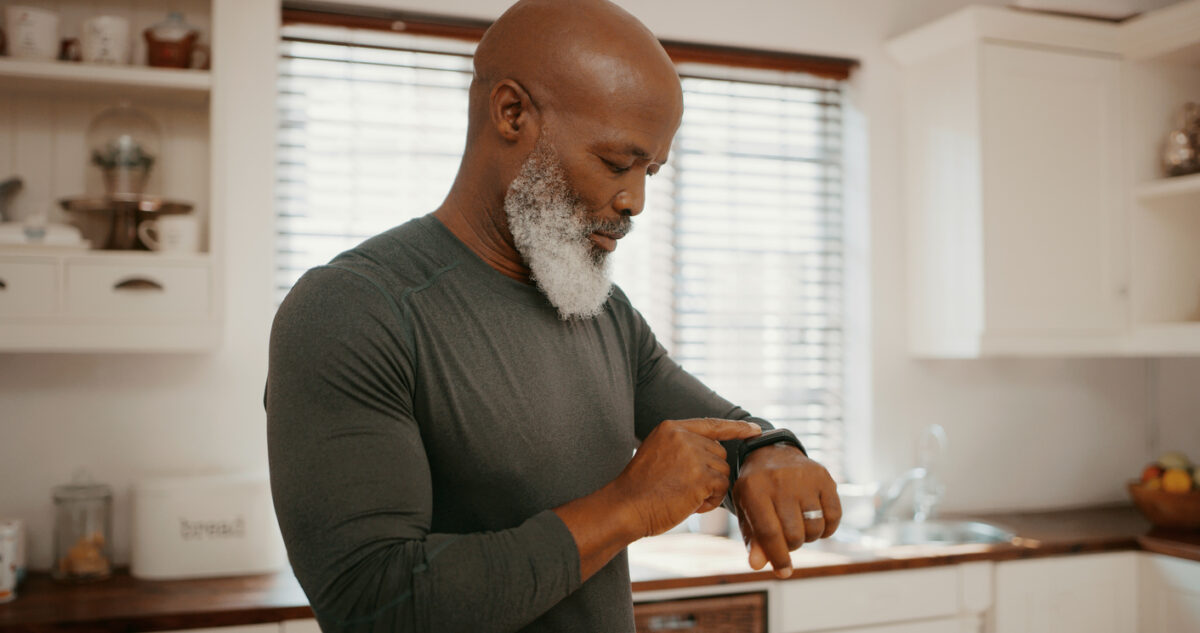Wearable Technology for Coronavirus Infection Control

The intersection between technology and health has been one that has recently attracted much attention from researchers, corporations, and consumers alike. Wearable fitness technology, such as FitBits and smartwatches, has especially erupted into the mainstream, and their use has more than tripled from 9% of US consumers in 2014 to 33% in 2018 [4]. These devices allow users to engage more with their own health while also providing a convenient avenue to read their notifications, send simple messages, make phone calls, or do other tasks previously limited to their smartphones [4].
Health-wise, smartwatches and other wearables are able to make 250,000 measurements per day on the user’s vital signs [2]. As Scott Burgett, the director of Garmin health engineering, says, “the more you know about your body and what your ‘baseline’ is,” the easier it becomes to “track trends and notice deviations” when they occur [3]. By constantly monitoring and measuring, wearable devices are able to alert users when changes are seen in their heart rate, skin temperature, or other physiological factors based on preprogrammed algorithms [2]. As many of these fluctuations can be indicative of a viral infection, wearable devices can be especially useful during the COVID-19 pandemic.
Since December of 2019, the SARS-CoV-2 virus has spread COVID-19, a respiratory disease, around the world [1]. The virus, which is correlated with fevers, radiographic evidence of pneumonia, and low white-cell or lymphocyte counts, does not yet have a rigorously tested vaccine or antiviral treatment [1]. Thus, current efforts on containing the spread focuses on fast, accurate, and available testing for all [1]. Testing, however, has not been able to curb the severity of the virus as it takes time for hosts to show symptoms and, consequently, many people spread the virus to others before realizing that they are infected. An estimated 25 to 50% of the US population is asymptomatically carrying the coronavirus, and this percentage will only increase without new methods of containment [1].
Wearable devices can be utilized to detect early cases and identify imminent outbreaks. One of the easiest and most useful measurements wearables can take is a user’s heart rate; viral illnesses put physiological stress on the human body, which will increase resting heart rates [1]. According to a Scripps epidemiologist, changes in heart rate can occur 4 days before a fever develops when a person contracts COVID-19 [2]. In addition, 40% of people with COVID-19 do not ever develop a fever, so wearable technology may even be more indicative than public temperature checks [2]. Wearables can also measure sleep patterns by analyzing heart rate data – elevated sleep duration partnered with worsened sleep quality are also signs of a physiological stress, possibly due to viral infections [1]. As a respiratory disease, COVID-19 also affects the efficiency of the lungs; thus, devices that can detect changes in respiratory function, such as shallow breathing, wheezing, or shortness of breath, are also very informative [1]. Together, these factors can help detect early cases of coronavirus and encourage asymptomatic or mildly symptomatic people to stay home once they have evidence that their bodies are undergoing stress.
In addition, consistently monitoring the population and recording the data can help patients who need more medical assistance receive it earlier and can help identify communities where potential outbreaks are imminent [1]. When people are more aware of their own health, hospital visits may also be reduced, which can both save hospital resources for those in dire need and lower the risks of transmission to health workers [1]. Finally, moderate intensity activity has been shown to reduce inflammation and improve immune responses, and wearable sensors may prompt physical activity in users by handing them more agency to their own health [1].
Although wearable devices and smartwatches are in no way replacements for telehealth or in person health visits, they can help significantly in identifying early, pre-symptomatic cases of COVID-19 and helping the world control the spread of the virus. Current issues remain with mass adoption of wearable tracking devices in privacy, data sharing, and underreporting [1]. Additionally, even if mass adoption of wearable technology is reached, caution should be taken to not over-interpret the data or unnecessarily cause distress [3]. Testing is still the best way to know if an individual has COVID-19, but the ability of wearable devices to detect pre-symptomatic cases and encourage isolation or other measures should be further examined.
References
[1] Seshadri, D., Davies, E., Harlow, E., Hsu, J., et al. (2020, June 11). Wearable Sensors for COVID-19: A Call to Action to Harness Our Digital Infrastructure for Remote Patient Monitoring and Virtual Assessments. Retrieved August 20, 2020, from https://www.frontiersin.org/articles/10.3389/fdgth.2020.00008/full
[2] Could wearable tech work as a Covid early warning system? (2020, June 09). Retrieved August 21, 2020, from https://www.scmp.com/lifestyle/health-wellness/article/3088137/your-wearable-tech-could-be-used-covid-19-virus-early
[3] Steger, Andrew. (2019, May 01). Can Wearable Tech Spot COVID-19 Symptoms? Retrieved August 21, 2020, from https://healthtechmagazine.net/article/2020/08/can-wearable-tech-spot-covid-19-symptoms-perfcon
[4] Phaneuf, A. (2020, January 31). Latest trends in medical monitoring devices and wearable health technology. Retrieved August 21, 2020, from https://www.businessinsider.com/wearable-technology-healthcare-medical-devices
